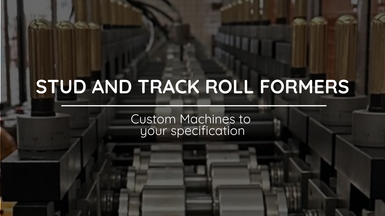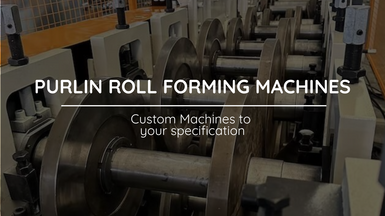
Roll Forming Machine Auto Stackers
Auto Stackers: Streamlining Roll Forming Processes for Enhanced Efficiency
Posted on Monday, July 10, 2023
In the world of roll forming, autostackers have emerged as invaluable tools that streamline production processes and enhance efficiency. These automated systems are designed to stack and organise roll-formed parts, eliminating the need for manual handling and improving overall productivity. This blog will explore autostackers and their uses in roll forming, highlighting their benefits, functionality, and impact on manufacturing operations.
Understanding Autostackers
Autostackers are specialised machines that automate the stacking and handling of roll-formed parts, allowing for seamless integration with roll-forming lines. These machines are equipped with advanced sensors, conveyors, and robotic arms that work in tandem to efficiently receive, stack, and organise the formed parts as they exit the roll-forming machine. Autostackers are designed to handle various part sizes, shapes, and materials, providing manufacturers with flexibility and versatility.
Streamlining Production Processes
The primary purpose of autostackers is to streamline production processes by automating the stacking and handling of roll-formed parts. Traditionally, manual stacking and handling can be time-consuming and prone to errors, leading to decreased productivity and potential quality issues. Autostackers eliminate these concerns by automating the stacking process, ensuring consistent and precise stacking, and reducing the risk of damage to the formed parts.
Increased Productivity and Efficiency
Autostackers significantly enhance productivity and efficiency in roll-forming operations. By automating the stacking process, manufacturers can achieve higher production rates, allowing for faster cycle times and increased output. Autostackers work with the roll-forming machine, eliminating the need for manual intervention and minimising downtime between runs. This continuous operation improves overall equipment effectiveness (OEE) and optimises production throughput.
Improved Quality Control
Autostackers contribute to improved quality control in roll forming. Their precise stacking and careful handling greatly reduce the risk of part damage, deformation, or misalignment. Autostackers can be equipped with sensors and vision systems to inspect the formed parts during stacking, ensuring that only quality parts are accepted and stacked. This enhances the overall quality of the final product and reduces waste caused by defective parts.
Flexibility and Customisation
Autostackers offer flexibility and customisation options to accommodate different part sizes, shapes, and stacking requirements. The machines can be programmed to handle various stacking patterns, such as straight stacking, interlocking stacking, or customised patterns based on specific manufacturing needs. Autostackers can also be integrated with downstream processes, such as packaging or further assembly, providing a seamless transition and optimising the overall manufacturing workflow.
Safety and Ergonomics
Autostackers contribute to a safer and more ergonomic working environment. Automating the stacking process minimises manual lifting and handling of heavy parts, reducing the risk of injuries and repetitive strain on workers. Autostackers have safety features like interlocks and sensors to ensure safe operation and prevent accidents. These features protect the workforce and enhance overall workplace productivity and employee satisfaction.
Autostackers have revolutionised the roll-forming industry by automating the stacking and handling of roll-formed parts. These machines streamline production processes, increase productivity, improve quality control, and enhance efficiency. With their ability to handle various part sizes, shapes, and materials, autostackers offer flexibility and customisation options to meet specific manufacturing requirements. Additionally, autostackers contribute to a safer working environment, reducing the risk of injuries and promoting employee well-being. By incorporating autostackers into roll-forming operations, manufacturers can optimise their production workflow, reduce labour costs, and deliver high-quality products to meet the demands of a competitive market.
Roll Forming Machines LLC's New Factory
Posted on Sunday, March 23, 2025
We have relocated factories, which will be available for tours very soon.

Uncoiler, Decoiler and Coil Car Roll Forming Machine Accesories from Roll Forming Machines LLC
Posted on Sunday, November 24, 2024
Contact us today with your specifications for a custom Uncoiler, Decoiler or Coil Car at [email protected] or call us at (+1) (407) 859 1119

Stud and Track Roll Forming Machines from Roll Forming Machines LLC
Posted on Saturday, November 23, 2024
Contact us today with your specifications for a custom Stud and Track Machine at [email protected] or call us at (+1) (407) 859 1119

Cee and Zee Purlin Roll Forming Machines from Roll Forming Machines LLC
Posted on Saturday, November 23, 2024
Contact us today with your specifications for a custom Cee and Zee Purlin Machine at [email protected] or call us at (+1) (407) 859 1119